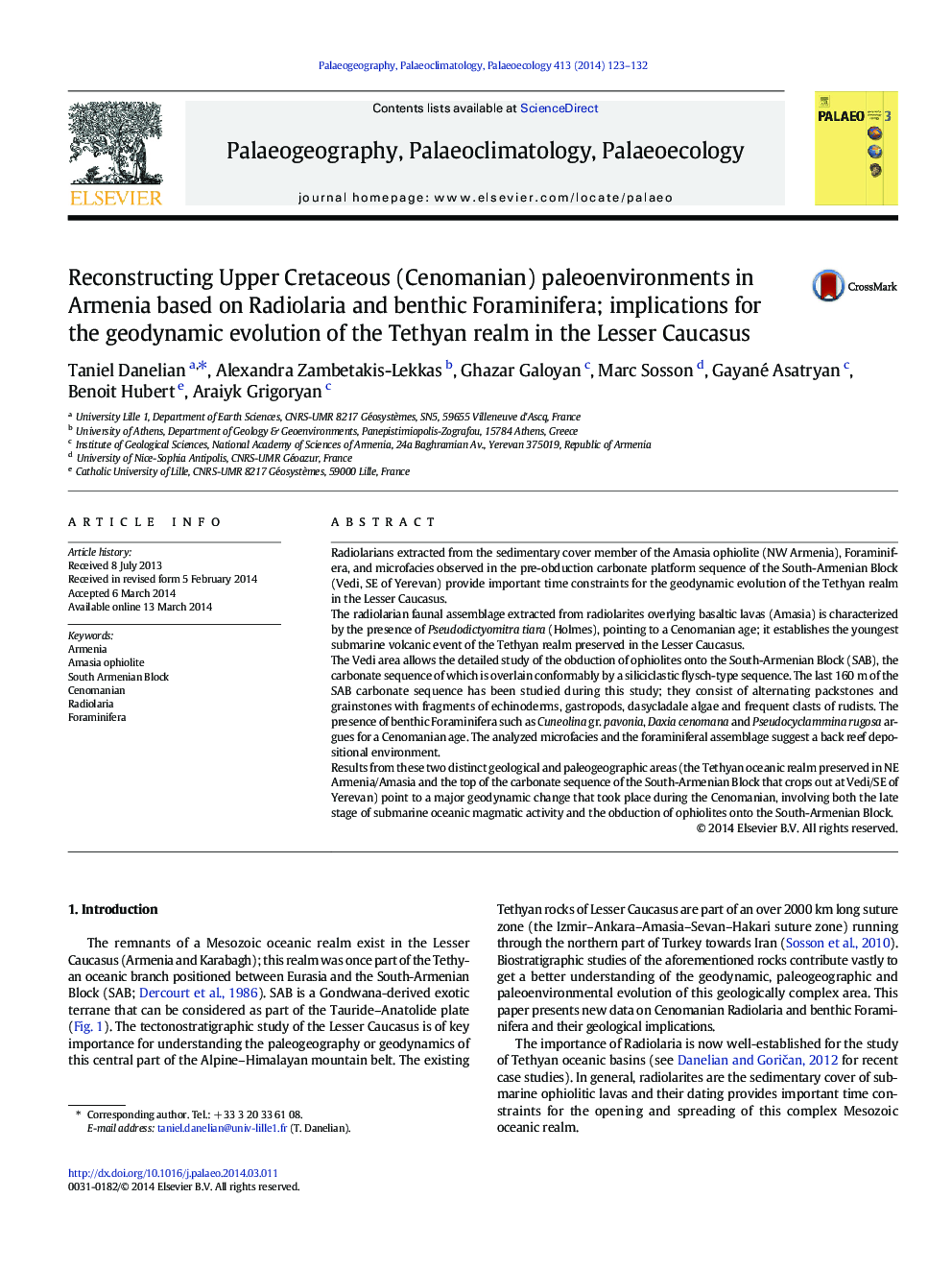| کد مقاله | کد نشریه | سال انتشار | مقاله انگلیسی | نسخه تمام متن |
|---|---|---|---|---|
| 4466149 | 1622177 | 2014 | 10 صفحه PDF | دانلود رایگان |

• Cenomanian radiolaria constrain the youngest Tethyan submarine volcanism in Armenia.
• Cenomanian Foraminifera date a back reef carbonate sequence of the S Armenian Block.
• The ophiolite obduction in the Lesser Caucasus started during the Cenomanian.
Radiolarians extracted from the sedimentary cover member of the Amasia ophiolite (NW Armenia), Foraminifera, and microfacies observed in the pre-obduction carbonate platform sequence of the South-Armenian Block (Vedi, SE of Yerevan) provide important time constraints for the geodynamic evolution of the Tethyan realm in the Lesser Caucasus.The radiolarian faunal assemblage extracted from radiolarites overlying basaltic lavas (Amasia) is characterized by the presence of Pseudodictyomitra tiara (Holmes), pointing to a Cenomanian age; it establishes the youngest submarine volcanic event of the Tethyan realm preserved in the Lesser Caucasus.The Vedi area allows the detailed study of the obduction of ophiolites onto the South-Armenian Block (SAB), the carbonate sequence of which is overlain conformably by a siliciclastic flysch-type sequence. The last 160 m of the SAB carbonate sequence has been studied during this study; they consist of alternating packstones and grainstones with fragments of echinoderms, gastropods, dasycladale algae and frequent clasts of rudists. The presence of benthic Foraminifera such as Cuneolina gr. pavonia, Daxia cenomana and Pseudocyclammina rugosa argues for a Cenomanian age. The analyzed microfacies and the foraminiferal assemblage suggest a back reef depositional environment.Results from these two distinct geological and paleogeographic areas (the Tethyan oceanic realm preserved in NE Armenia/Amasia and the top of the carbonate sequence of the South-Armenian Block that crops out at Vedi/SE of Yerevan) point to a major geodynamic change that took place during the Cenomanian, involving both the late stage of submarine oceanic magmatic activity and the obduction of ophiolites onto the South-Armenian Block.
Journal: Palaeogeography, Palaeoclimatology, Palaeoecology - Volume 413, 1 November 2014, Pages 123–132